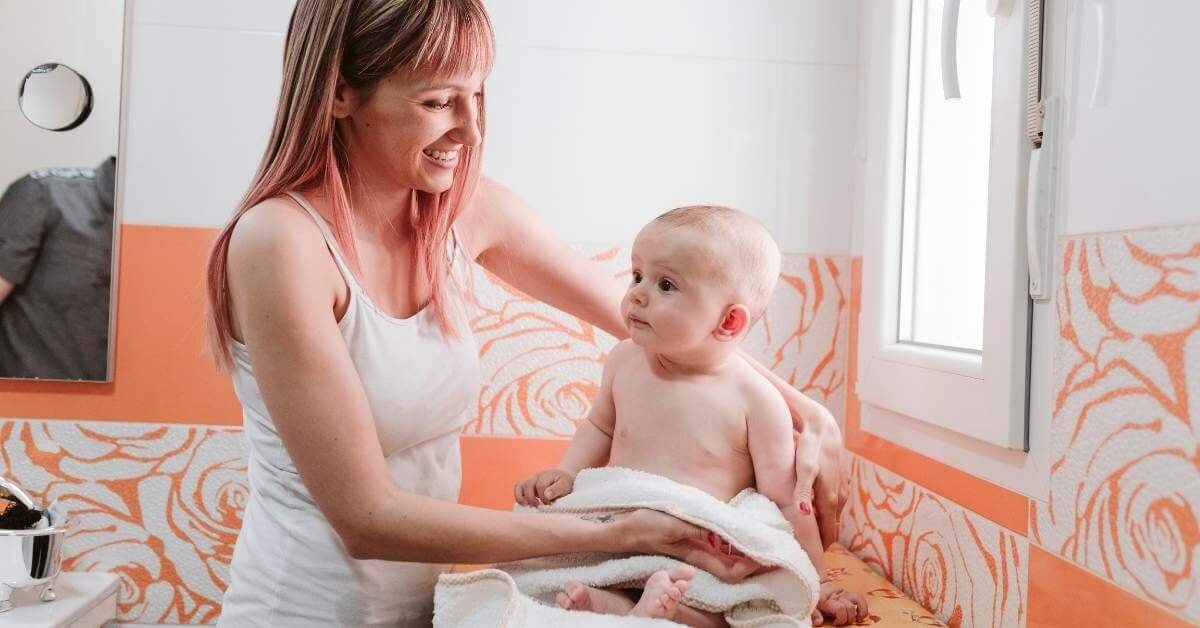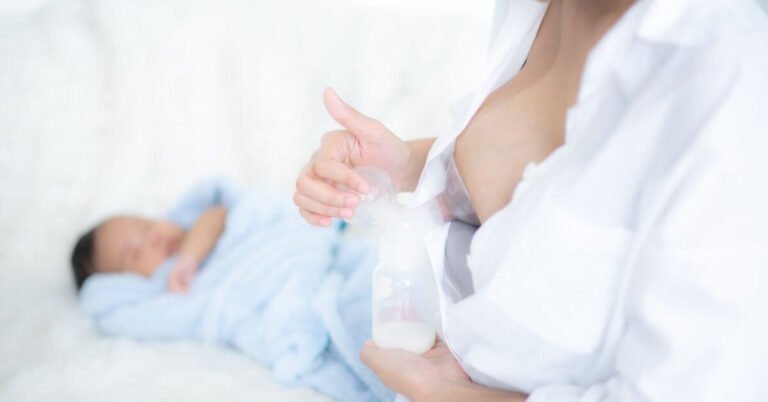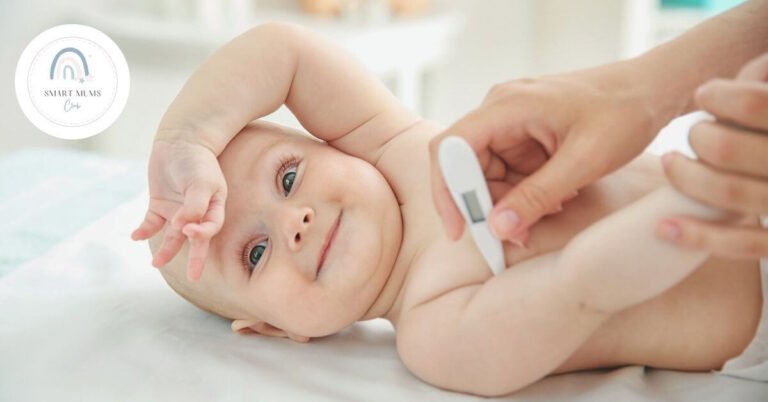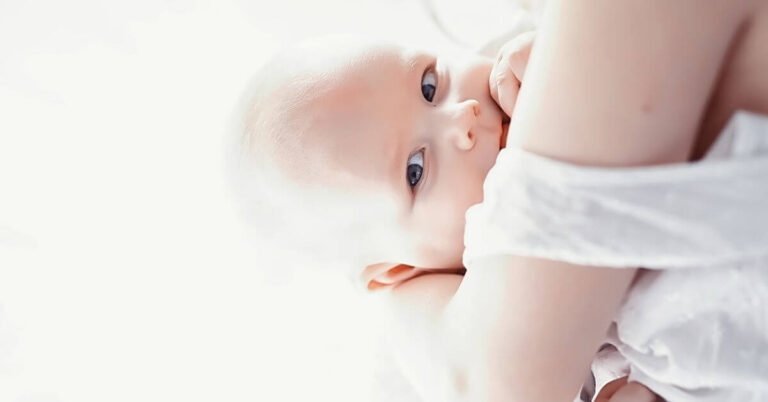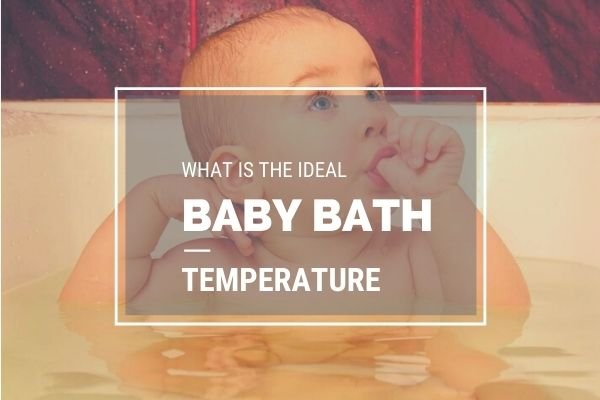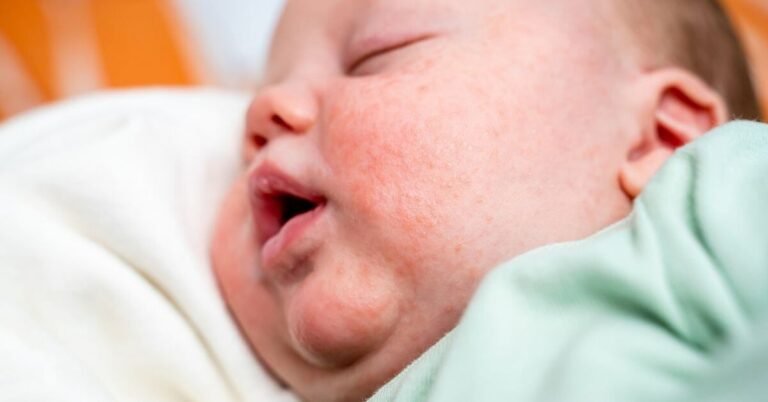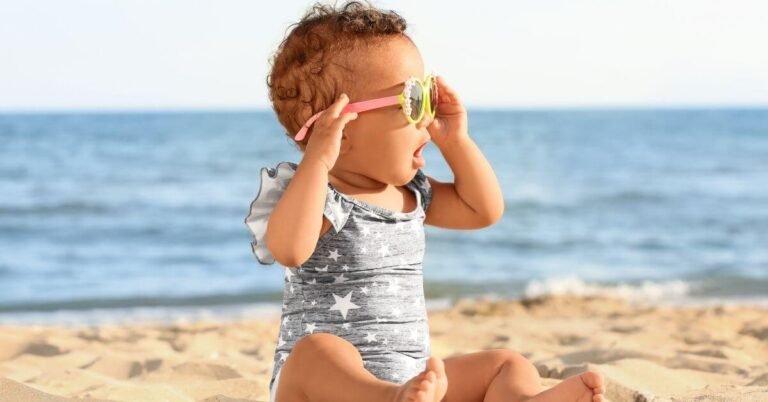How to treat baby heat rash quickly and naturally?
How to treat baby heat rash? When should you seek a doctor’s help for this condition, and how can you care for it at home? Heat rash is a skin irritation that occurs when sweat ducts are blocked and perspiration builds up under the skin. Babies are more prone to this condition due to the fact that their sweat ducts are not fully developed.
The body cools itself by sweating. But sometimes, the body temperature rises very quickly, and sweating is not enough to cool the body. Especially newborn babies have more difficulty regulating their body temperature.
Heat rash, also called prickly heat or Miliaria Rubra, occurs when the sweat glands get blocked by dead skin or bacteria. Another disadvantage is that babies have underdeveloped sweat glands. This makes them even more susceptible to developing a heat rash.
What causes baby heat rash?
When is your baby most likely to develop a heat rash?
- In hot and humid weather.
- When the baby is wearing tight clothing.
- Chubby babies with many skin folds are more at risk of moisture getting trapped in the creases and causing a rash.
- When babies are out in direct sunlight.
- Excessive use of creams and moisturizers can block a baby’s sweat glands.
What does heat rash look like in babies?
Heat rash can look like lots of small red pimples or little blisters all over a baby’s body. Some people call it prickly heat because of the prickly and itchy rash.
Here is a heat rash picture so new moms can see what a heat rash looks like.
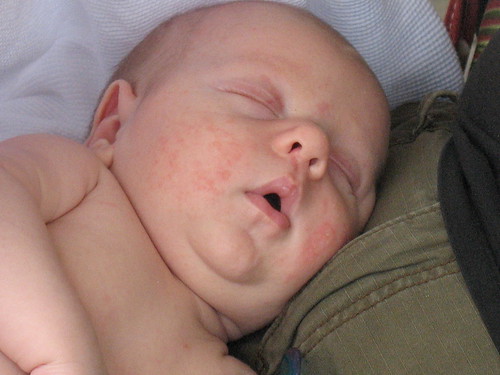
How do you know it is a heat rash, not another skin condition like eczema? Heat rash occurs in places where your baby sweats most, in skin folds like elbow creases, armpits, neck, upper chest, upper back, and the groin.
Remember that a heat rash is clearly a sign that your baby is overheated. Extremely high body temperature is dangerous because it can damage the brain and vital organs. Then again, heat rash can also happen in the winter when it is cold, and your baby is sweating excessively because he is overdressed.
Types of heat rash in babies
- Miliaria Rubra is the type of heat rash we see most frequently. About 30% of all children will experience this at some point. With this type, the inflamed ducts cause a red rash (Rubra) that causes a prickly or itching feeling.
- Miliaria crystallina is the type of heat rash you may see in the first weeks after your baby is born. Roughly 10% of all babies will experience this type of rash. Typical for this rash is that the blocked sweat ducts rupture, and small fluid-filled vesicles appear on the skin.
- Miliaria profunda is a severe type of heat rash and the least common. This is when sweat leaks into the skin between the dermis and epidermis. This results in firm flesh-colored bumps.
Remember that your baby’s scratching may cause the rash to become infected and the bumps to fill with pus (miliaria pustulosa). In this case, call your doctor, as it may be necessary to treat the baby’s heat rash with antibiotics.
How to treat baby heat rash naturally?
What can I give my baby for heat rash? Fortunately, a heat rash usually goes away on its own without using any medication when you provide a cooler environment for your baby. But until the rash is gone, you may need to do something to soothe the itching.
Here is how to treat baby heat rash:
- Cool baths with baking soda, oatmeal, or cool compresses will help soothe the itching.
- Let your baby air dry on a towel; he/she will love it.
- Dry the infant’s body creases with care and apply some corn starch powder.
- Cucumber has a natural, cooling, and soothing effect on the skin. You can apply some slices or mashed-up cucumber on the affected areas of the baby’s skin.
- Finally, you can try chamomile, known for many centuries to reduce inflammation and treat rashes in children. Add chamomile to the baby’s bathwater or put soaked tea bags on the rash.
What can I use for baby heat rash?
Should I moisturize baby heat rash? Yes, it is recommended to moisturize baby heat rash with a gentle, hypoallergenic lotion to help soothe the skin and prevent further irritation.
Is Calamine lotion safe to use on babies?
Calamine lotion is well known for its soothing properties and is often used to treat heat rash.
How to treat baby heat rash with Calamine lotion? Do not apply calamine lotion liberally on your baby’s body. Only use it where the baby’s skin is affected. And be extra careful not to get it in your child’s eyes or mouth.

Caladryl Calamine (affiliate link)
Caladryl Lotion, one of the brand names for pramoxine, is a topical analgesic cream people can use to treat itching skin provoked by insect bites, sunburn, or heat rash.
Generally, Caladryl lotion does not cause severe side effects, and serious allergic reactions from using the product are rare. However, If you want to use it on children under the age of 2, it is best to speak to your doctor first.
Nonetheless, it is sensible to watch your child for any allergic reactions when using new medication for the first time.
Things that should alert you and contact your doctor immediately are when the heat rash and the itching get worse, or your child gets dizzy or has breathing problems.
Is it safe to use hydrocortisone cream for babies?
Calamine lotion and hydrocortisone cream can be very helpful when there is a risk that scratching may cause an infection, but only use them with the approval of your pediatrician.
Pediatricians prescribe hydrocortisone for a variety of baby skin conditions. How to safely treat baby heat rash with hydrocortisone?
1.When using it on infants and toddlers, hydrocortisone should be used in the smallest possible dose and never for a longer period of time.
2. Even the mildest hydrocortisone creams can cause side effects if they are used for a prolonged time. Do not cover the skin where you used the cream, like with a bandage or a diaper. This will cause increased absorption in the skin.
3. Avoid using it on the baby’s face or in skin folds if unnecessary. Those areas absorb more hydrocortisone than the rest of the body.
Similar posts
- 9 Ways How to Treat Baby Eczema Every Parent Should Know About
- How to treat cradle cap at home in 3 simple steps
- Nipple thrush- How to treat a breastfeeding yeast infection?
How to prevent or treat baby heat rash in summer?
- Firstly, if it’s hot and humid weather, keep your baby cool with light, breathable cotton clothing ( no synthetic materials).
- Secondly, move your baby inside in a cooler and dryer environment. If needed, use a fan or air-conditioning to lower the temperature.
- Avoid using thick creams and ointments that may block the sweat glands.
- Give the baby more often a lukewarm bath or shower.
- Lastly, keep your baby well hydrated.
Do you need to take your baby to the doctor with a heat rash?
Not as long as your baby is happy and acting fine. If you treat heat rash with the remedies we just mentioned, your baby’s heat rash will soon be gone. How long does a heat rash last on babies? Normally, the rash will heal within 3 to 4 days.
But if your baby also has a high temperature of 105.1 °F or more, this may well be a sign of heatstroke. Heatstroke occurs when the baby’s body has difficulty regulating its temperature in a very hot environment.
With this in mind, you should consult your doctor when your baby shows the following symptoms.
- He is not feeling well.
- Has fever or chills.
- When he is vomiting.
- Doesn’t drink
- The baby is crying excessively.
- A rash that lasts more than 3 to 4 days
To sum up…
Heat rash is common in babies and may cause some discomfort for a few days. Remember that a baby’s skin is different from an adult’s. It is thinner and more sensitive to heat. To avoid baby heat rash, you need to use gentle products and breathable clothing and provide a cool environment throughout the hot summer months.

